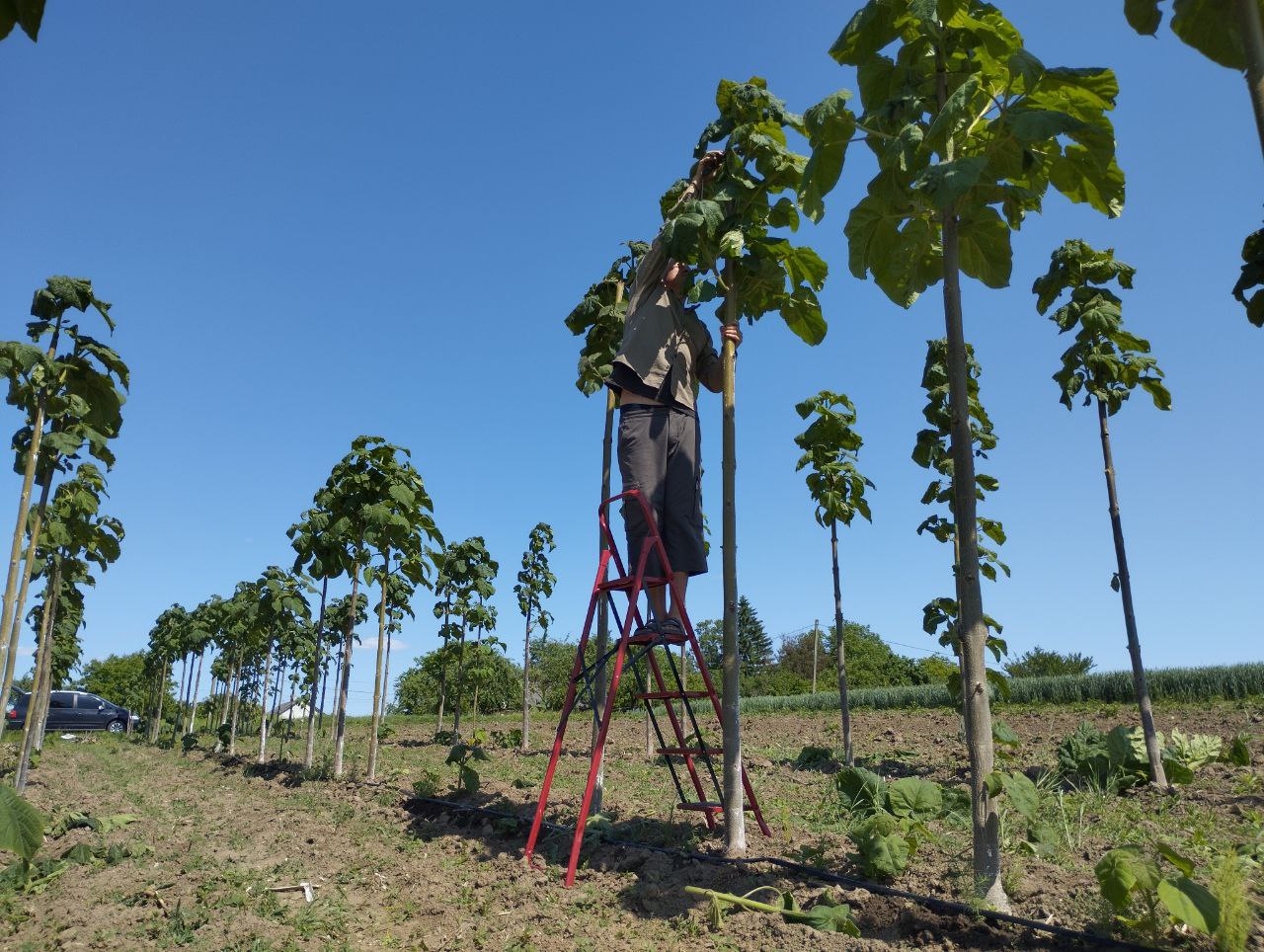The Paulownia Tree: A Fast-Growing Wonder With Endless Possibilities
by Arnab Dey Green Business Published on: 12 June 2023 Last Updated on: 11 November 2024

The Paulownia tree, scientifically known as Paulownia spp., has captured the attention of nature enthusiasts, woodworkers, and entrepreneurs alike.
Renowned for its astonishing growth rate and versatile wood, this majestic tree has become a subject of curiosity and interest. In this article, we delve into the most frequently asked questions surrounding the Paulownia tree, providing insights into its characteristics, cultivation, uses, and potential challenges.
Unveiling the Paulownia Tree: Nature’s Rapid Riser
Paulownia trees, also referred to as Empress or Princess trees are captivating in their unique attributes. Native to China, these deciduous wonders are distinguished by their large, heart-shaped leaves and clusters of lavender or purple flowers. Their graceful appearance and ability to thrive in a variety of soil types have contributed to their widespread popularity.
The Phenomenal Growth of Paulownia Trees
One of the most remarkable features of Paulownia trees is their exceptional growth rate. In optimal conditions, these trees can soar up to 10 feet (3 meters) in just one year, making them one of the fastest-growing hardwood trees worldwide. Some species have even gained recognition for their potential to outgrow bamboo, providing a renewable source of timber in a relatively short time.
The Versatility of Paulownia Wood
Beyond its rapid growth, the wood of the Paulownia tree offers a myriad of possibilities. The lightweight and fine-grained nature of Paulownia wood makes it highly sought after by woodworkers. Its resistance to rotting and warping further enhances its appeal. From crafting exquisite furniture and cabinetry to fashioning musical instruments and boat building, Paulownia wood showcases its versatility in a wide range of applications. It is also utilized for veneers and plywood and as a sustainable source of biomass.
Tackling the Invasive Potential of Paulownia Trees
While Paulownia trees possess numerous desirable traits, concerns have arisen regarding their potential invasiveness. When introduced into non-native regions, their fast growth and wind-dispersed seeds can lead to ecological imbalances. As a responsible approach, it is crucial to assess local regulations and consult with experts before planting Paulownia trees, especially in areas where they may pose a threat to native plant species.
Unlocking Paulownia’s Potential: Timber, Biofuels, and Heating Opportunities
Paulownia tree not only offers aesthetic and ecological benefits but also presents lucrative opportunities in various industries. The fast-growing nature of Paulownia trees makes them an excellent choice for businesses in the timber industry.
The lightweight and fine-grained wood of Paulownia is highly valued by woodworkers, furniture makers, and craftsmen. Its versatility lends itself to applications in cabinetry, veneers, and even the production of high-quality musical instruments. Entrepreneurs looking to capitalize on the demand for sustainable and renewable timber sources can consider Paulownia as a profitable venture.
Moreover, Paulownia trees can also be utilized in the production of biofuels. As a fast-growing biomass source, they offer a sustainable alternative for biofuel production. The high cellulose content in Paulownia wood makes it an excellent candidate for bioenergy conversion processes, such as bioethanol production. This presents an opportunity for industries focused on renewable energy and sustainable fuel sources.
In addition to its potential use as a timber and biofuel resource, Paulownia wood can be utilized for heating purposes. The high energy content and low moisture content of Paulownia wood make it an efficient choice for firewood.
Its quick growth rate ensures a readily available supply of firewood for heating systems, providing a renewable and eco-friendly alternative to traditional heating methods. Those interested in utilizing Paulownia for heating purposes can explore options to purchase Paulownia seedlings specifically cultivated for this purpose.
Entrepreneurs, homeowners, and landowners looking to invest in sustainable practices and explore business opportunities can consider the multifaceted uses of Paulownia trees. Whether it’s for the timber industry, biofuel production, or utilizing wood for heating purposes, the fast growth, versatility, and sustainable nature of Paulownia make it an attractive option with potential economic and environmental benefits.
When considering any commercial utilization of Paulownia, it is crucial to adhere to local regulations, obtain necessary permits, and ensure responsible cultivation and harvesting practices to preserve the ecological balance and mitigate any potential adverse impacts.
Paulownia Trees as a Profitable Venture
Given their rapid growth and versatile wood, Paulownia trees have gained recognition as a potentially profitable venture. However, successful commercial cultivation requires careful planning, appropriate management practices, and a thorough understanding of market demand. Entrepreneurs exploring the timber industry or those seeking sustainable agricultural opportunities may find Paulownia trees to be an attractive option.
Conclusion
It is essential to approach the cultivation and utilization of Paulownia trees responsibly, considering their potential invasiveness in certain regions. Local regulations and expert advice should be sought to ensure that the introduction of these trees does not disrupt the native ecosystem.
Nevertheless, the remarkable growth rate of Paulownia trees, combined with the versatility of their wood, opens up a world of opportunities. Woodworkers can harness the fine-grained, lightweight qualities of Paulownia wood to create stunning furniture, cabinetry, and musical instruments.
Entrepreneurs can explore the potential of Paulownia as a sustainable biomass source or venture into the profitable timber industry. Landowners with ample space can enhance their landscapes with the majestic presence and vibrant blossoms of these magnificent trees.
Read Also:



































































































